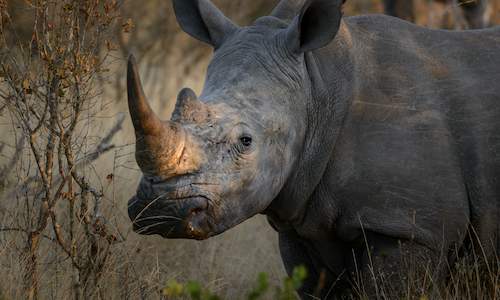The Public Protest

Hunting Rules
Only large predators that come from either a wild population or a managed wild population may be hunted in terms of the new draft regulations put forward by the Department of Environmental Affairs and Tourism (DEAT). The regulations cover the sustainable use of cheetah, brown hyena, spotted hyena, wild dog, lion and leopard.
Canned hunting is defined as the hunting of captive large predators, or where predators are tranquillised or lured by any stimulus, such as sound, scent, bait, food or any other methods in order to be hunted. If an animal has been captive-bred it can only be hunted if it has not been human-imprinted in the rearing process, and has been rehabilitated and free-ranging for at least six months in its natural habitat.
Gerhard Verdoorn, from the committee of the SA Hunters and Game Conservation Association (SAHGCA), has said that he is "bitterly unhappy" that the state department had allowed canned hunting to get out of control. His outspoken condemnation of unethical hunting has brought him three serious death threats, but also the support of ethical hunters throughout Africa. Speaking on the new draft legislation, he has said that he is certain that the Hunter's Association will be providing DEAT with plenty of feedback on the new norms and standards.
Verdoorn also said that he felt that the implementation of the law on paper might prove to be a problem. He added that he personally also believed that each species mentioned in the regulations should have individual guidelines, as they all have different biology, and fend for themselves in the wild in different ways. Only leopard are specifically mentioned in the draft document, where provincial nature conservation officials have discretionary powers over the methods of leopard hunting.
Ron Thomson, author of the set book for budding nature conservationists, "The Wildlife Game", has deplored the manner in which hunters have been "hammered" in the media in recent years. He says that hunters are the "stalwarts" of conservation, and that maintaining the entire spectrum of nature, from the soil up, takes precedence over canning. He said that money obtained from hunting could be used to protect entire habitats outside of national parks. He added that the breeding of white rhino for "canning" has helped the rhino population reach the level it has today.
Hunting Operations: Behind the Scenes
The draft regulations replace proposals previously set out that called for the voluntary participation of hunters and breeders. According to a nature conservation official from Klaserie, who oversees permits for about seven captive-breeding and managed wild populations of large predators, the game managers have been "very cooperative" in following the previous proposals. The department checks out their management plans, which cover the entire reserve on which hunting of large predators is carried out, from vegetation monitoring to the management of the prey populations, before allowing them predator hunting permits.He said that most of the operations only hunt one lion per year, and leopard hunting fell under CITES (Convention on the International Trade in Endangered Species of Flora and Fauna) regulations. He added that microchipping the animals, as required by the new norms and standards, is one issue that the ranchers find to be a financial burden. "The people are not reluctant, but this costs money."
The biodiversity section of his department has already developed a database with the microchip identities of various predators held in breeding operations in the area. If the regulations are passed unamended, no large predators may be kept as pets, and all captive predators must be microchipped. If an animal is not fitted with a microchip, it may not be transported or translocated.
The regulations also state that a hunter must be on foot and more than 200m from a vehicle before shooting, forbids the use of dogs other than to track an already injured animal, bans the hunting of predators at night and requires bow hunters to obtain a special permit. The damage inflicted on farmers by large predators is called an 'inherent agricultural risk', and landowners should protect their property from large predators by using non-lethal preventative measures.

 In a world where wildlife has become a precious commodity, Kruger National Park Wildlife Conservation has taken on the responsibility of c...
In a world where wildlife has become a precious commodity, Kruger National Park Wildlife Conservation has taken on the responsibility of c...